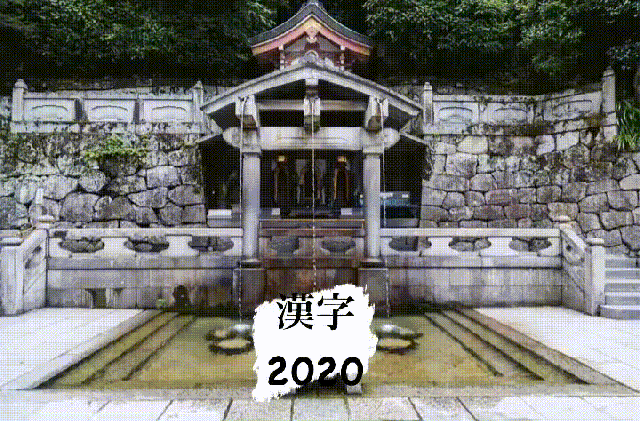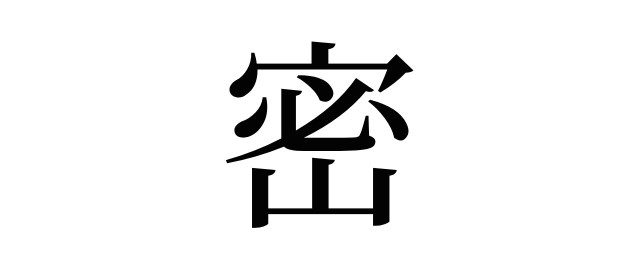
The top ten kanji characters reveal a lot about what life was like in Japan this year.
As the year draws to a close, it’s time to take a look back at the year that was, and in Japan, that means all eyes were on Kyoto’s Kiyomizudera temple this afternoon.
Every year on 12 December, Kiyomizudera reveals the Kanji of the Year, as voted by people around the country, and today, Seihan Mori, the head abbot of the temple, took his usual place in front of a blank board on the site’s famous balcony, raised a large calligraphy brush smothered in ink, and began the brushstrokes that would reveal the top character for 2020.
▼ A moment so important it was broadcast on Japan’s national broadcaster, NHK.
2020年の世相を表す漢字に『密』が選ばれました#今年の漢字https://t.co/92MUYXCBE0
— Twitter モーメント (@MomentsJapan) December 14, 2020
▼ As the video above reveals, the Kanji of the Year for 2020 is “密” (“mitsu”).

For people in Japan, “密” was always the clear frontrunner for top spot in the contest, as it’s a buzzword that’s been used by the government since the pandemic first took a hold of the country earlier this year.
The character for “mitsu” literally translates as “density“, and at a time when the rest of the world was getting used to the phrase “social distancing“, here in Japan, we were told to avoid the “Three Mitsus” (“Three Densities”) or “Three Cs” as it was translated in English.
▼ Avoid the three densities: Closed Spaces, Crowded places, Close-contact settings
#COVID19 update: The experts on the novel #coronavirus stress the need to avoid three overlapping conditions. The “Three Cs” are: closed spaces, crowded places and close-contact settings. https://t.co/YYg68WBsxo (please follow the guidelines for the public use of this poster.) pic.twitter.com/dON2CasDAE
— PM's Office of Japan (@JPN_PMO) March 29, 2020
“Mitsu” has been the keyword used over and over again in messaging from the Prime Minister’s Office, the Ministry of Health, Labour and Welfare, and Tokyo’s Governor Yuriko Koike as a way for people to keep themselves safe while still going out as normally as possible without a lockdown.
Governor Koike used the word so much during her press briefings that she became the star of a web browser game called “Mitsu Desu” back in April. A sample from the game below shows Koike saying “mitsu desu” as she clears people from her path to maintain social distancing.
#密ですゲーム
—
こういうクソゲー割と好き pic.twitter.com/3Tl2MMShvyゆとりたゃん
(とてもつよい) (@yutori_ppn) April 18, 2020
Another game created around the same time showed Koike flying through the sky and breaking up crowds with “mitsu desu“.
昨日作り始めた「密ですゲーム」が出来た。。都知事になって密集団を探して解散させるゲームです... #密ですゲーム #StayHome #Unity #socialdistancing pic.twitter.com/fEFfed9sTz
— もうせ (@motulo) April 20, 2020
Word of her viral stardom reached Koike herself, who made news again when she waved her arms in front of reporters soon , saying “mitsu desu” like her game character.
"Mitsu desu". Nice to see Koike stepping out as her video game character. What level of mitsu are you? https://t.co/2MlIcugxnm https://t.co/ml8HPKp9ul #蜜ですゲーム #蜜です #japan #小池百合子
— Oona McGee(@OonaMcGee) April 23, 2020
The call to avoid “mitsu” situations has hung over everyone’s heads this year, crushing travel plans, spoiling parties and get-togethers, and putting a dampener on live music and sporting events, including the Tokyo Olympics.
So it’s apt that this kanji, which people have seen more of this year than any other year, was chosen as Kanji of the Year, receiving 28,401 votes out of a total of 208,025 to be named the winner.
So what were the other words in the top ten? Let’s take a look at them all below.
1. 密 Density – 28,401 votes (13.65 percent)
2. 禍 Damage (widely seen this year in “コロナ禍” an expression that refers to the damage caused by the coronavirus pandemic) – 13,655 votes (6.56 percent)
3. 病 Disease or illness – 10,369 (4.98 percent)
4. 新 New (widely seen this year in “新型コロナウイルス” or “novel coronavirus”) – 9,882 votes (4.75 percent)
5. 変 Change (from “変化”, or “change”, referring to changes due to coronavirus and changes in the U.S. presidency as well) – 7,037 votes (3.38 percent)
6. 家 House (more people then ever were staying home and working from home this year) – 6,865 votes (3.30 percent)
7. 滅 Destruction (this kanji makes up the “metsu” part of Kimetsu no Yaiba or Demon Slayer, which took the box office by storm and became a cultural phenomenon this year) – 5,200 votes (2.50 percent)
8. 菌 Bacteria – 5,062 votes (2.43 percent)
9. 鬼 Demon – (this kanji makes up the “ki” part of Kimetsu no Yaiba or Demon Slayer) – 4,840 votes (2.33 percent)
10. 疫 Epidemic – 4,082 votes (1.96 percent)
The top ten results reveal the coronavirus and its damaging effects have been plaguing people’s minds in Japan this year, with eight of the characters related to the pandemic. It could actually be argued that all ten of the characters were related to the coronavirus, given the negative connotations of “demon” and “destruction” which are also tied to this year’s hottest film.
The 2020 results are definitely a departure in mood from 2019’s Kanji of the Year, which was awarded to 令/rei in honour of the change in Emperor, and therefore era, which was more hopeful of new beginnings for the current Reiwa Era. The Kanji of the Year in 2018 (“disaster“), 2017 (“north“, in reference to North Korean missile launches) and 2014 (“tax“, as the result of an unpopular sales tax increase that year) all pointed to some worrying developments, but looking back on them, they now pale in comparison to everything we’ve experienced this year.
Hopefully the Kanji of the Year for 2021 will represent a brighter future for us all.
Sources: Japan Kanji Aptitude Testing Foundation via Jin
Featured image: Pakutaso (edited by SoraNews24)
● Want to hear about SoraNews24’s latest articles as soon as they’re published? Follow us on Facebook and Twitter!



No hay comentarios:
Publicar un comentario